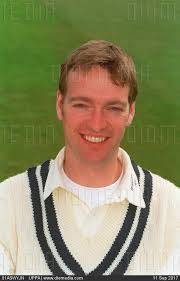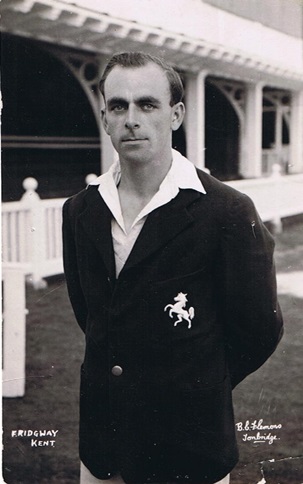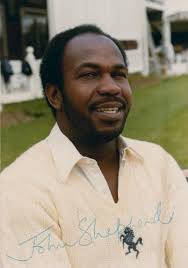I was recently at the annual dinner of the Kent League, a very enjoyable occasion which celebrated the successes of the leagues and the clubs in 2018. Among the prizewinners was 17 year old Jordan Cox, a wicket-keeper batsman who has just signed his first professional contract with the club, and of whom the club has very high hopes. He will, of course, have to wait for his chances because there is a long list of wicket-keeper batsmen ahead of him in the pecking order at the moment. Sam Billings is the club captain, Adam Rouse his very able deputy behind the stumps, and then there is Ollie Robinson, who broke into the first team as a batsman at the end of the summer, but who is also an excellent keeper, not to mention Heino Kuhn who has kept wicket for South Africa, and even Daniel Bell-Drummond who has been seen wearing the gloves on occasion. But DBD’s current bowling ambitions probably drop him off that list. And I don’t think Stevo’s ever kept wicket.
We may have a glut of wicket-keepers, but the issue that has haunted the side for many years is our lack of fast bowlers. If we look back through the lists, we note that since the turn of the century, only one player who is a genuine home-grown opening bowler has been capped by the county – Matt Coles. And he has moved on to pastures new. Yes, we’ve had some great imports and canny signings, from Matt Henry and Mitch Claydon to people like McLaren, Kemp, Andrew Hall, Amjad Khan and Martin Saggers, but none of these are home grown. The last opening bowler to come up through the leagues to win his county cap was one J B de C Thompson, capped in 1999, who retired soon afterwards to become a full time doctor. He is now the club’s honorary medical advisor. Many potential fast bowlers have made it to the fringes of the county side, but have not then kicked on to become mainstays of the attack. It is not a proud record.

Dr. Julian Thompson
Can we put this down to the Thatcher years, when the mines were closed and no longer could we go to a pithead in Betteshanger or Snowdown and whistle for a burly fast bowler, as legend says they used to do in Yorkshire, Derbyshire and Nottinghamshire? Or is that there is something in the Kentish air that works for wicketkeepers and left arm spinners but not for fast bowlers? Actually, it’s a combination of chance and, perhaps, something about Kent that just doesn’t suit the really fast stuff. In the 2018 KCCC Annual, Hon. Curator David Robertson picked his all time Kent eleven, and opening the bowling were John Shepherd and Fred Ridgway.

Fred Ridgway

John Shepherd
Both excellent players, and brilliant servants of Kent, but neither of them Kent born, and neither of them likely to strike fear for their physical safety into the hearts of opening batsmen.
This is not a diatribe against the Kent League nor against the Academy or any of the coaches there. The raw material has to be there too, and a look back at the history of the club shows that it was ever thus. When the Tonbridge Nursery was established under Captain William McCanlis, he too found that there were few opening bowlers to be found in the Garden of England.
William McCanlis is a hugely important name in the history of Kent County Cricket Club. He played 46 matches for Kent between 1862 and 1877, scoring 1113 runs at an average of just 13.97, and with a best score of 67, opening the batting for Kent against Lancashire at Gravesend in 1873, and taking 18 wickets for 496 runs (ave. 27.55) with as best of 4 for 67 against Yorkshire at Middlesbrough in 1864. He was a right hand bat, and a bowler of whose style no description seems to have survived. Nor, for that matter, does a photograph of him. Although his playing record was mediocre – he was described as ‘a fine and powerful hitter, excelling especially in the drive, and likewise a good field’ – he proved to be an inspired coach and talent scout. Like so many in every sporting field who have to struggle to make the most of their skills, McCanlis knew the nuts and bolts of his own game and was therefore able to pass his knowledge on to players who had far more natural talent than he ever had. Think of Jose Mourinho or Roy Hodgson in football – average players but great coaches – and compare them with Bobby Charlton or Stanley Matthews – great players but because they did not have to analyse their skills to understand why they were the best on the park, only average coaches. It’s the same in every sport – with exceptions, of course. Those who can, do, and those who can’t, teach. And the best teachers are worth at least as much as the best doers.
In 1897 McCanlis was appointed coach of the newly established Tonbridge Nursery, in many ways the equivalent of today’s Academy. Among the players who came into the county eleven via the Tonbridge Nursery in his time were Colin Blythe (discovered by McCanlis in the nets at the Rectory Field, Blackheath), Arthur Fielder (a fast bowler from Plaxtol, near Tonbridge), “Tich” Freeman, Wally Hardinge, James Seymour and Frank Woolley. That’s four of the all time top six wicket takers for Kent and three of the top four run scorers, as well as the two most prolific catchers in Kent history. Quite a record.
When he retired in 1912, the committee noted that “what the club owes him for his lifelong services to the county as cricketer, counsellor and friend it is impossible to estimate, but so far as his coaching is concerned he has the extreme satisfaction of having lived to see and enjoy the most satisfactory results.” Between 1906 and 1913, the county won the county championship four times.
In McCanlis’ day, over a century ago, cricket was simpler and the key to success was in identifying your talent from within your county’s borders and then nurturing that talent until it flowers naturally. Today things are a bit more competitive and the search for talent covers the whole world, not just Kent. But the basic need to have a nursery, these days called an Academy, and to have people who can pass on the skills and attitude that a top cricketer needs still remains. I believe the Kent Academy is serving us well, and I know their keenness to find genuine quality opening bowlers is stronger than ever. But it all takes time.
0 Comments